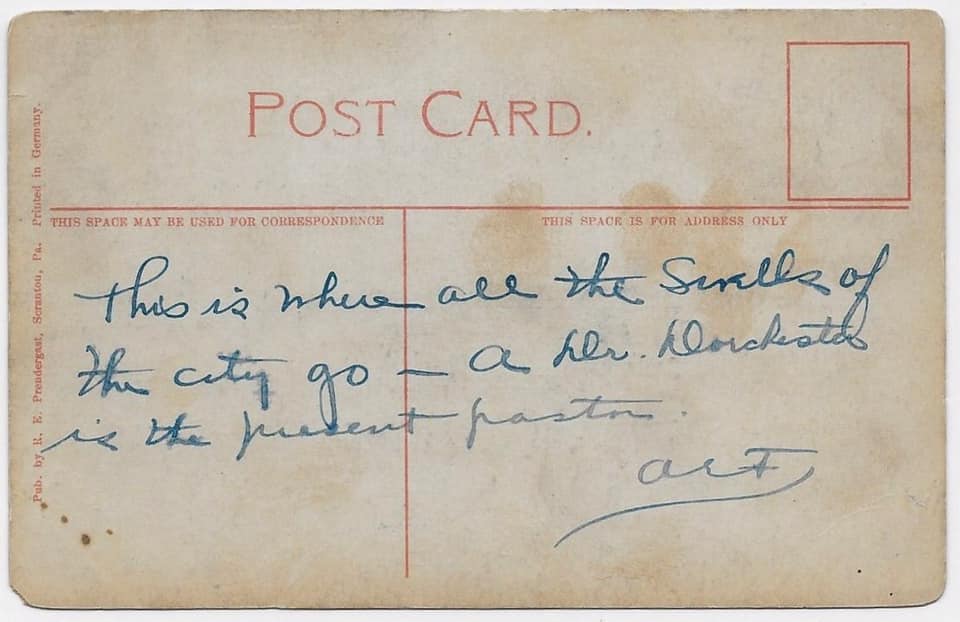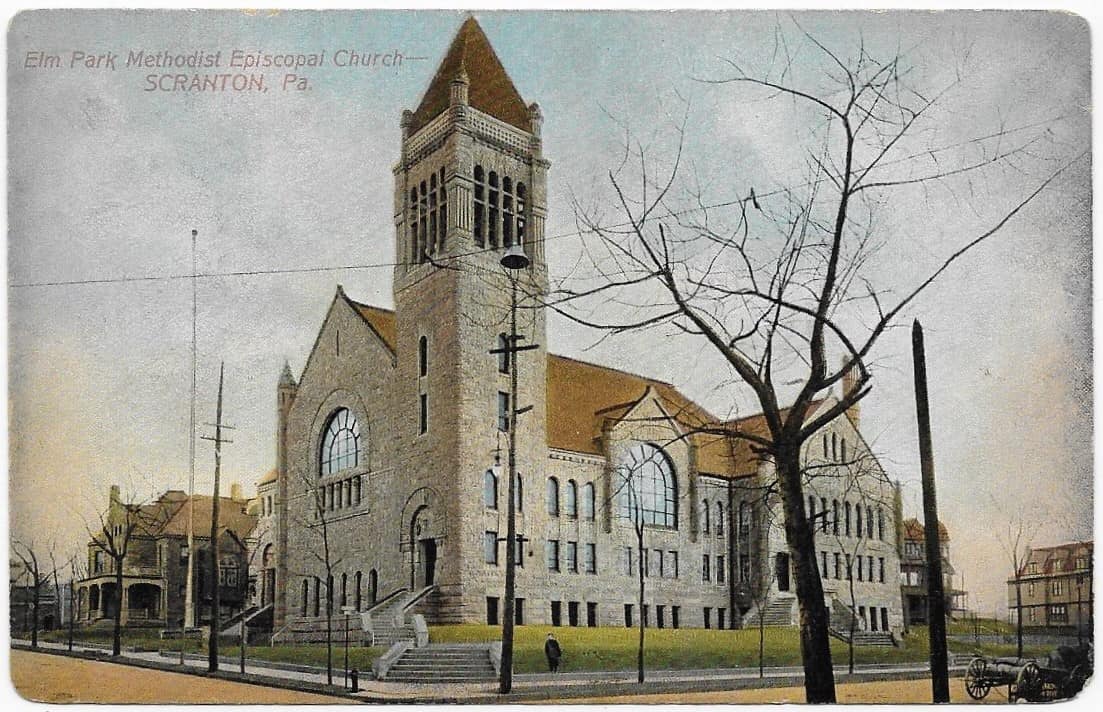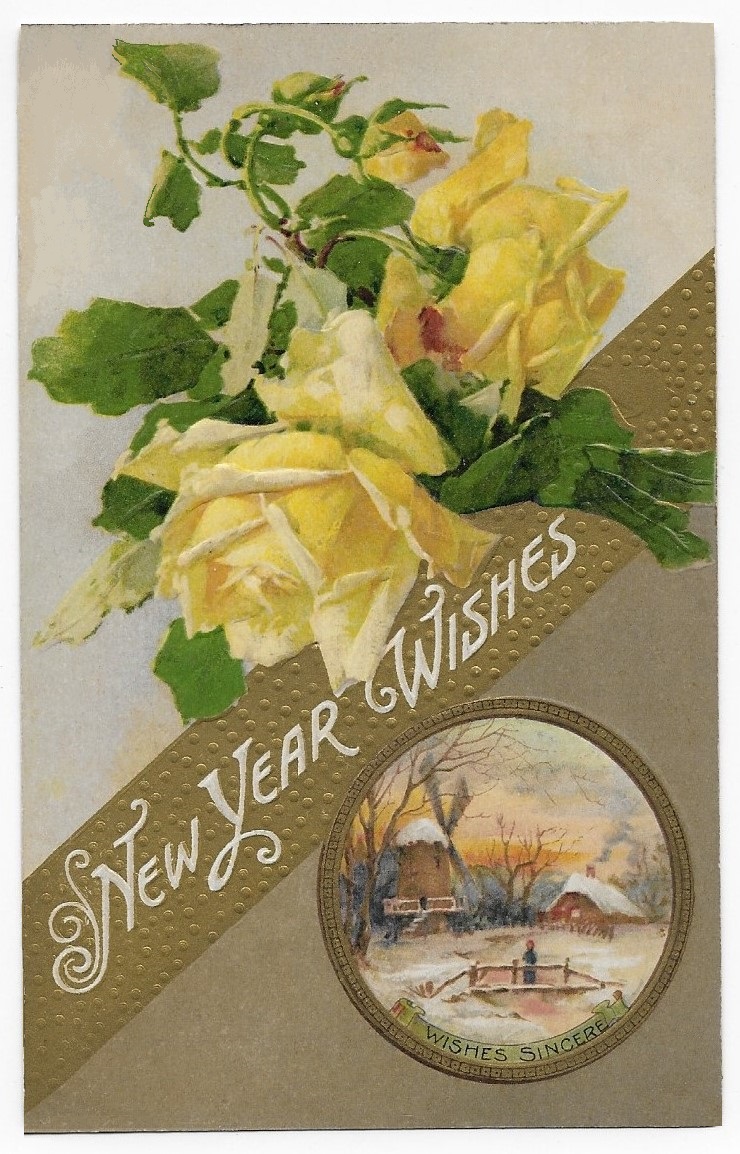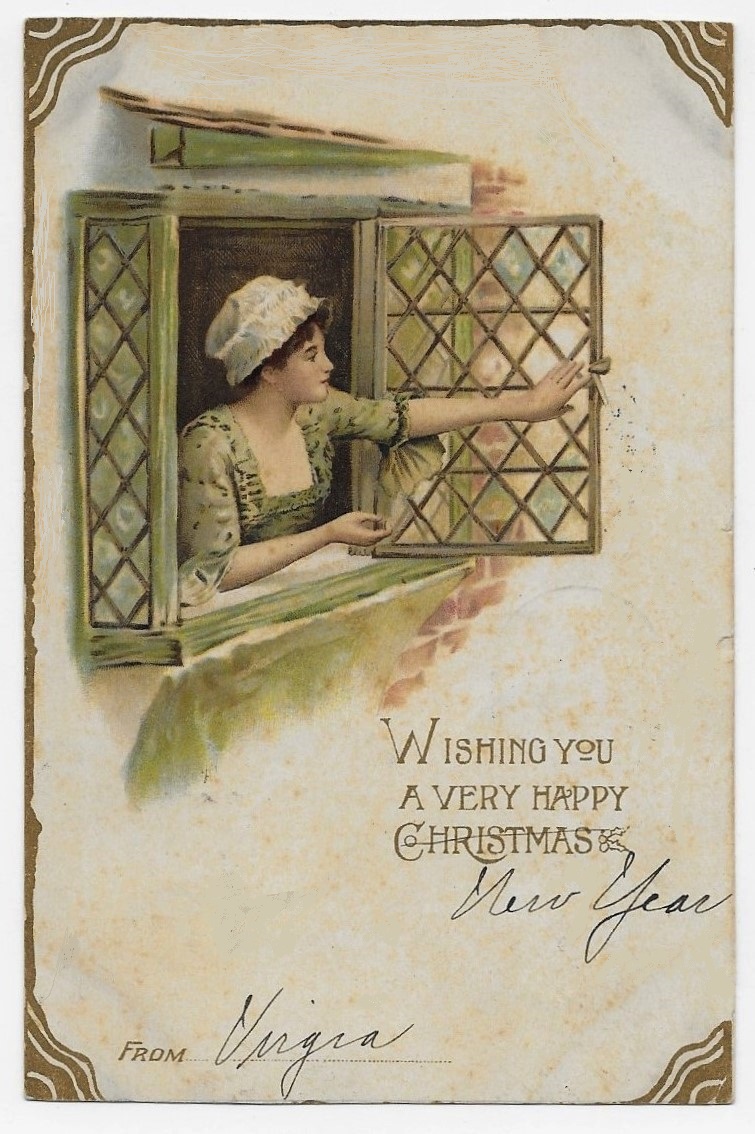It is an unfortunate fact that the congregations of many Churches in the early 20th century reflected specific socio-economic or racial subsets of the population.
If you lived in a small town of the 19th century, you were more likely to attend a community church or a church building that was shared between members of two or more denominations.
A person named “Art” seems to have visited Scranton sometime around 1910.
Scranton is located in the Wyoming Valley, along the Lackawanna River, in northeast Pennsylvania. The city is 120 miles west of New York City.
An ancient home of the Lenape Tribe, the area was first settled by Europeans at the time of the Revolutionary War. After the war, many settlers from Connecticut built homes there as Connecticut maintained a claim on this area throughout the Colonial Era (due to imprecise or overlapping royal charters – it is hard to parcel out territories you have never seen!)
In 1910, Scranton was a very wealthy city, the center of anthracite mining and a growing textile industry.
Scranton was the first city in the US to light city streets with electricity (1880) and to adopt an electric trolley system.
It still uses the moniker, “Electric City”.
Alas, the region suffered after World War II, and the population today is about half the population of the 1930’s.
The survival of much fine urban architecture, beautiful homes, an expansive Steam Museum (celebrating the city’s history as a railroad center) and an electric light museum, has generated a tourist industry.
Art made an inscription on the reverse of a postcard that he may have purchased in Scranton.
The face of the postcard bears a hand-colored photograph of the “Elm Park Methodist Episcopal Church”.
The postcard was published by R. E. Prendergast of Scranton; the postcard was printed in Germany.
Art writes, “this where all of the swells of the city go”.
He added, “a Dr. Dorchester is the present pastor”.
The Rev. Dr. Donald Dorchester (descendent of William Brewster and Fourth-generation of Methodist Pastors) can be found in numerous citations on-line.
Art’s comment is an exaggeration in a city as large and prosperous as Scranton, but he must have been impressed by the number of civic leaders at the Elm Park Church.





